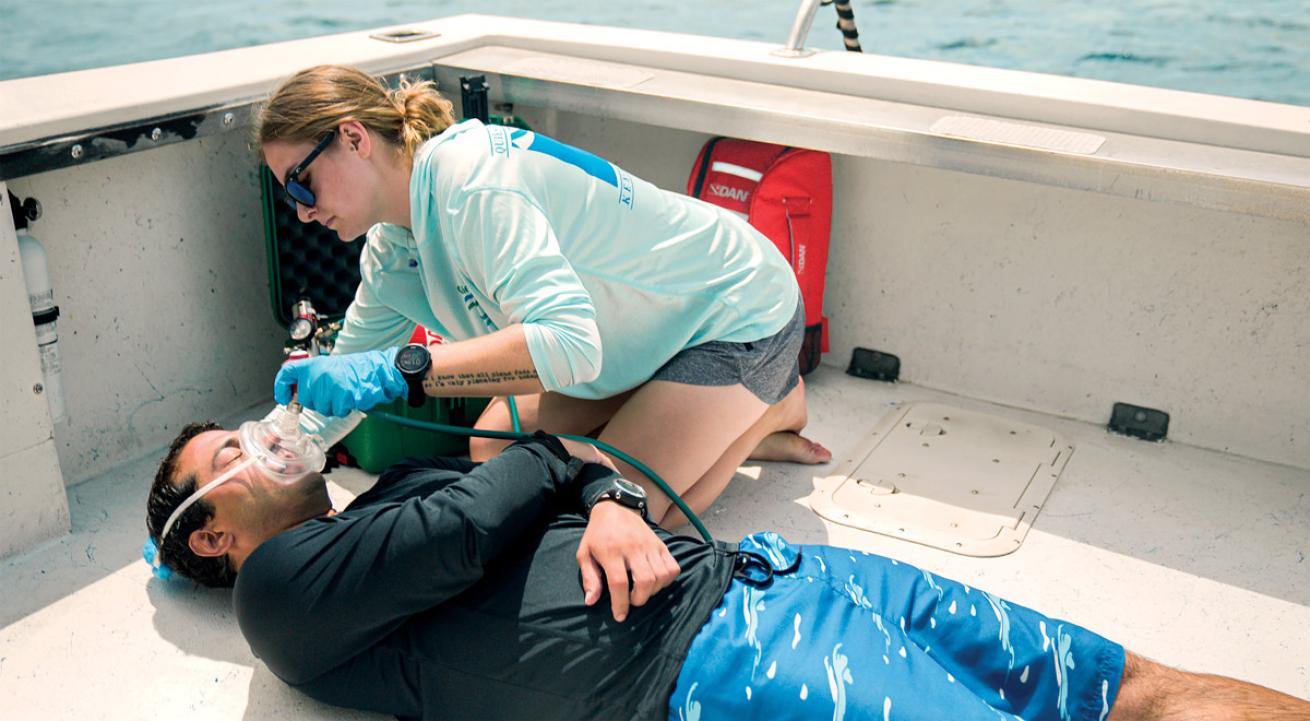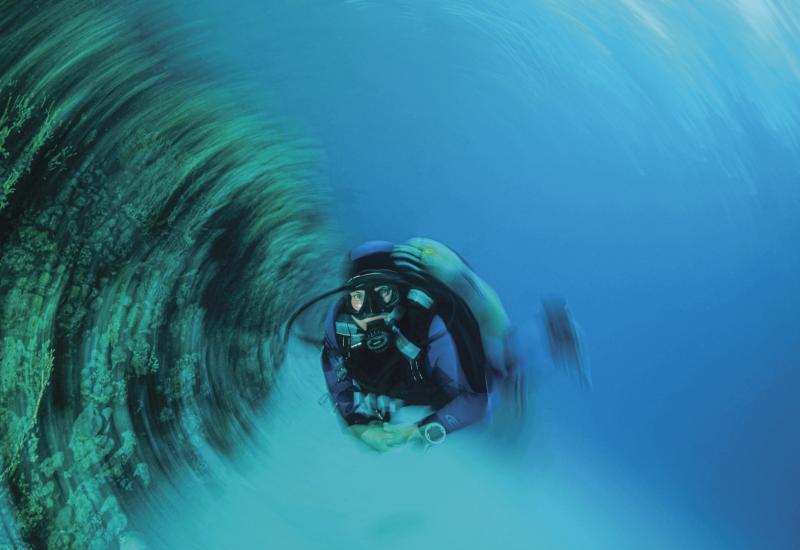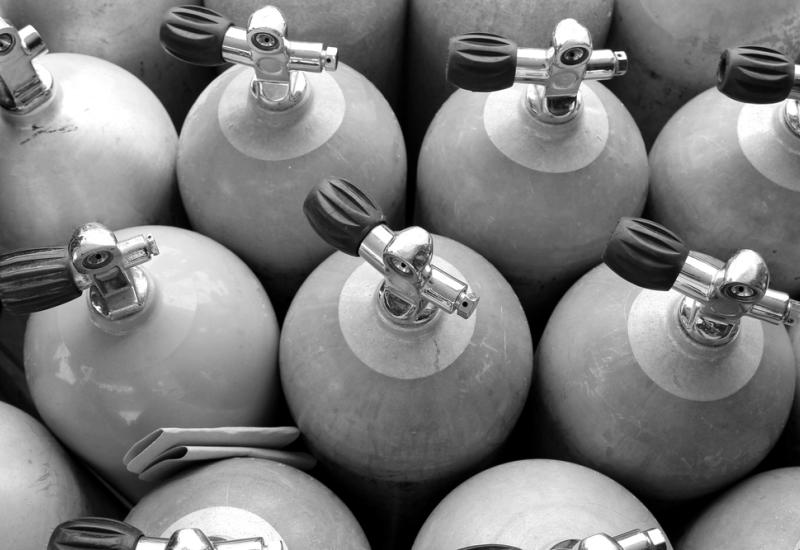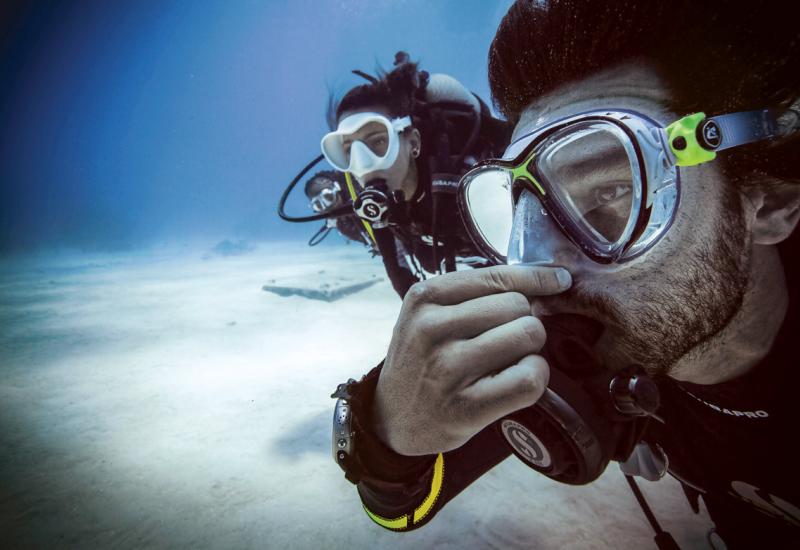Ask DAN: How Do You Treat Decompression Sickness?

DAN
When a diver experiences symptoms of decompression sickness after diving, prompt action can greatly improve the outcome.
Decompression sickness (DCS) occurs when gas that is dissolved in body tissues comes out of solution in the form of bubbles following ascent. These bubbles can cause disruption in blood vessels and the lymphatic system as well as immune responses, inflammation and tissue damage. Symptoms include pain, numbness, tingling, muscular weakness and marbled bruising on the skin. It’s also common for a diver with DCS to experience symptoms such as unusual fatigue, headache, light-headedness, dizziness and nausea.
Although DCS is rare (occurring after approximately 0.03 percent of dives), it can affect any diver. In fact, most cases of DCS occur in divers who were diving within their no-decompression limits.
Related Reading: Lessons for Life: Getting Decompression Sickness
First Aid
When providing care to a diver with DCS symptoms, ensure the situation is safe for everyone so no additional injuries occur. Check for immediate threats to the diver’s life (such as a blocked airway or severe bleeding), and ask permission to help. If the person is unresponsive, permission to provide medical assistan can be assumed. If symptoms are severe, call emergency medical services (911).
Oxygen administration is a critical element of first aid for dive accidents. Oxygen units contain various delivery systems, including oronasal and nonrebreather masks, so divers should know the appropriate mask to use in any given situation.
The oronasal mask is the most versatile and effective delivery device in most circumstances. It delivers a high fraction of oxygen to breathing, responsive injured divers as well as to unresponsive divers who are not breathing on their own.
Nonrebreather masks are an option for distressed injured divers who are unable to activate demand valves. These single-use, disposable masks feature an attached reservoir bag that captures the flow of oxygen to the mask to ensure a ready supply. These masks do not create as good a seal as oronasal masks, however, so some oxygen escapes, and some ambient air enters the mask via perimeter gaps. As a result, injured divers using nonrebreather masks receive a lower fraction of oxygen compared with oronasal masks. Nonrebreather masks use a continuous flow of oxygen, which exhausts the oxygen supply more quickly.
Take notes and record the diver’s vital signs every fifteen minutes, continually monitor their level of consciousness and check for neurological deficits. Interview the diver and their buddy, inquiring about any problems during the dives, all dive profiles within the last 24 hours and any pertinent medical information.
Physiology
Breathing first-aid oxygen is recommended for diving injuries because it elevates blood oxygen levels, which creates a partial-pressure gradient that accelerates the rate of inert-gas elimination, and therefore bubble elimination, from the body. Breathing 100% oxygen is recommended for reducing both bubble size and subsequent bubble formation. This partial pressure gradient encourages the outflow of inert gas from the tissues into the lungs, where it can be expelled from the body. The high concentration of inhaled oxygen also increases the inbound gradient for oxygen, elevating oxygen delivery to injured or ischemic tissues (areas with poor circulation). This may also reduce pain and swelling (edema) and limit or reverse hypoxic injury.
Related Reading: Prepare to Play—Building a Scuba First Aid Kit
Definitive Treatment
Any diver suspected of having DCS should be evaluated by a doctor. Call emergency medical services or transport the diver to the nearest medical facility. Remember, Divers Alert Network (DAN) provides 24-hour emergency services to assist injured divers and those who care for them, including doctors. If any assistance is required, call the DAN Emergency Hotline at +1-919-684-9111.
Ideally, there should be an oxygen unit and a trained provider nearby whenever people are diving. If you aren’t trained, find an instructor near you and enroll in a course. First aid skills are useful everywhere, and if you ever need them, there’s a good chance it will be to help someone you spend a lot of time with, such as a friend or family member.
You never know when and where an emergency might happen, and being prepared to respond to diving injuries and medical emergencies may one day save someone else’s life.










